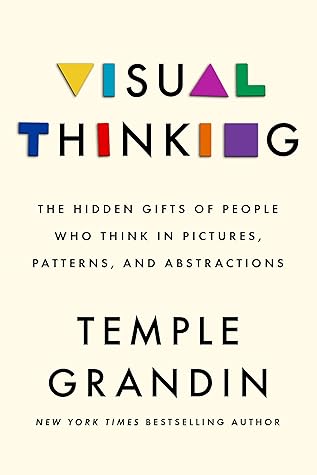More on this book
Community
Kindle Notes & Highlights
Read between
November 28, 2022 - January 21, 2023
The first step toward understanding that people think in different ways is understanding that different ways of thinking exist.
visual thinking is not about how we see but about how the brain processes information; how we think and we perceive.
spatial visualizer who sees in patterns and abstractions.
work of the researcher Maria Kozhevnikov showed that there are object visualizers like me, who think in pictures, and, as I suspected, a second group of mathematically inclined visual-spatial thinkers, an overlooked but essential subset of visual thinkers, who think in patterns.
the object thinkers build the trains, and the spatial visualizers make them run.
The kids who should have grown up to invent this equipment are often considered poor performers, academically or behaviorally, and are shunted into special education. But many of them are simply visual thinkers who are being screened out because the current curriculum favors verbal, linear thinkers who are good at taking tests. The hands-on classes where some of these “poor students” might have shown great ability are now gone.
We are losing essential technical skills, for three main reasons. First, the people who had manufacturing expertise are not being replaced at the same rate at which they’re leaving the job market. Second, we’ve ceded the manufacture of not only volume goods such as clothes and toys and appliances to foreign companies but high-tech goods as well (about 30 percent of iPhones are made in China). Last, and this is my main area of focus: we’ve screened out visual thinkers. When we fail to encourage and develop the talents and skills of people who think in different ways, we fail to integrate ways
...more
People who are primarily verbal thinkers tend to comprehend things in order, which is why they often do well in school, where learning is mostly structured sequentially. They are good at understanding general concepts and have a good sense of time, though not necessarily a good sense of direction. Verbal thinkers are the kids with perfectly organized binders and the adults whose computer desktops have neat rows of folders for every project. Verbal thinkers are good at explaining the steps they take to arrive at an answer or to make a decision. Verbal thinkers talk to themselves silently, also
...more
The organization part is where I stop on the verbal thinker spectrum. I would not pick high visibility jobs. 😒🫣
I’ve noticed that they strongly prefer to work sequentially, meaning they are linear thinkers and need to connect thoughts in a beginning-middle-end sequence.
Pictures are associational, sentences go in order. Logic for her was lost without verbal order,
Visual thinkers, on the other hand, see images in their mind’s eye that allow them to make rapid-fire associations. Generally, visual thinkers like maps, art, and mazes, and often don’t need directions at all. Some visual thinkers can easily locate a place they’ve been to only once, their internal GPS having logged the visual landmarks. Visual thinkers tend to be late talkers who struggle with school and traditional teaching methods. Algebra is often their undoing, because the concepts are too abstract, with little or nothing concrete to visualize. Visual thinkers tend to be good at arithmetic
...more
Many visual thinkers on the spectrum, however, must learn to adapt to the dominant culture. They don’t understand that the rest of the world communicates thoughts and feelings through words.
The geniuses, as we’ll see, are usually “pilers.” Silverman also correctly notes that if you made the person with the messy pile organize those papers, he or she would never find anything again. Such people know where everything is. For them, the “mess” is organized. They see it in their mind’s eye.


